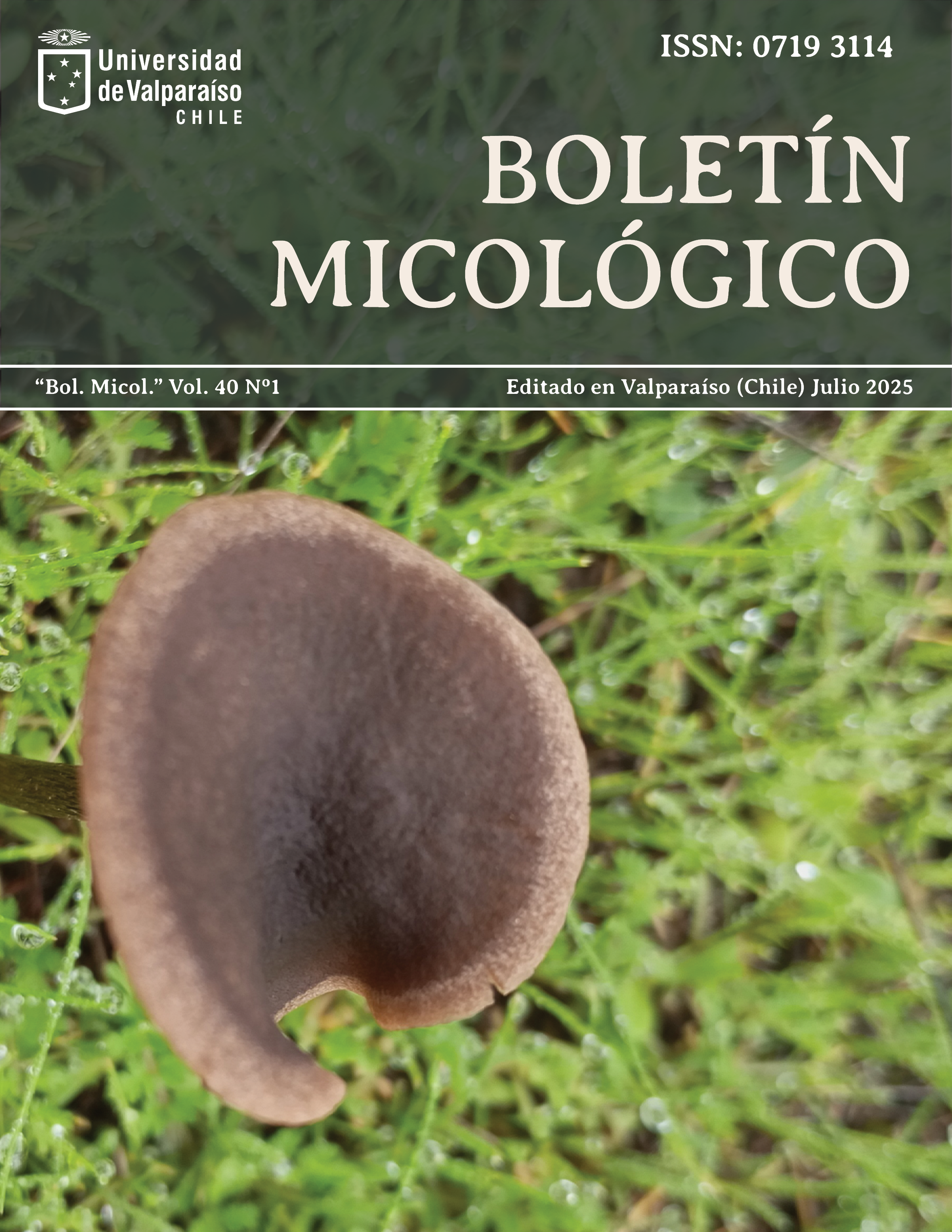Mycology as an applied tool in forensic science
DOI:
https://doi.org/10.22370/bolmicol.2025.40.1.4936Keywords:
Post-mortem interval, micetism, legal medicine, forensic taphonomy, barcodeAbstract
Forensic sciences is applied in cases requiring a thorough investigation to demonstrate the veracity of the events that occurred in an alleged criminal act. These sciences use empirical knowledge to analyze and evaluate the events that occur in a criminal, accidental, or suicidal incidents. Testimony is a key process in such investigations and is carried out by expert witnesses, who must defend their scientific and forensic analyses before the facts and elements examined in the legal field, specifically in criminal court, to establish a fair sentence. Mycology, through experimental studies and case reports in legal medicine, can contribute to the forensic field by determining the postmortem interval (PMI), mycetism, and mycotoxicosis events. However, it has not been validated for application in legal medicine. This limitation leads to the omission of crucial information, particularly in cases involving clandestine burials. Fungi can provide critical information when other forensic disciplines are not applicable in reported cases where PMI estimation is required. Currently, efforts are being made to systematize the identification of fungi and their spores through forensic taphonomic analysis and to integrate biomedical professionals for mycological interpretation. Furthermore, forensic mycology is useful in determining the cause of death in cases of mycetism and mycotoxicosis, which are occasionally misattributed to natural causes or other factors, potentially leading to the impunity of those responsible. The objective of the review was to demonstrate the usefulness of forensic mycology in expert investigation, its impact on legal medicine, and to identify the limitations that prevent its application in practice.
Downloads
Downloads
Published
How to Cite
Issue
Section
License

This work is licensed under a Creative Commons Attribution 4.0 International License.
Aquellos autores/as que tengan publicaciones con esta revista, aceptan los términos siguientes:- Los autores/as conservarán sus derechos de autor y garantizarán a la revista el derecho de primera publicación de su obra, el cuál estará simultáneamente sujeto a la Licencia de reconocimiento de Creative Commons (CC Reconocimiento 4.0) que permite a terceros compartir la obra siempre que se indique su autor y su primera publicación esta revista.
- Los autores/as podrán adoptar otros acuerdos de licencia no exclusiva de distribución de la versión de la obra publicada (p. ej.: depositarla en un archivo telemático institucional o publicarla en un volumen monográfico) siempre que se indique la publicación inicial en esta revista.
- Se permite y recomienda a los autores/as difundir su obra a través de Internet (p. ej.: en archivos telemáticos institucionales o en su página web) antes y durante el proceso de envío, lo cual puede producir intercambios interesantes y aumentar las citas de la obra publicada. (Véase El efecto del acceso abierto).








